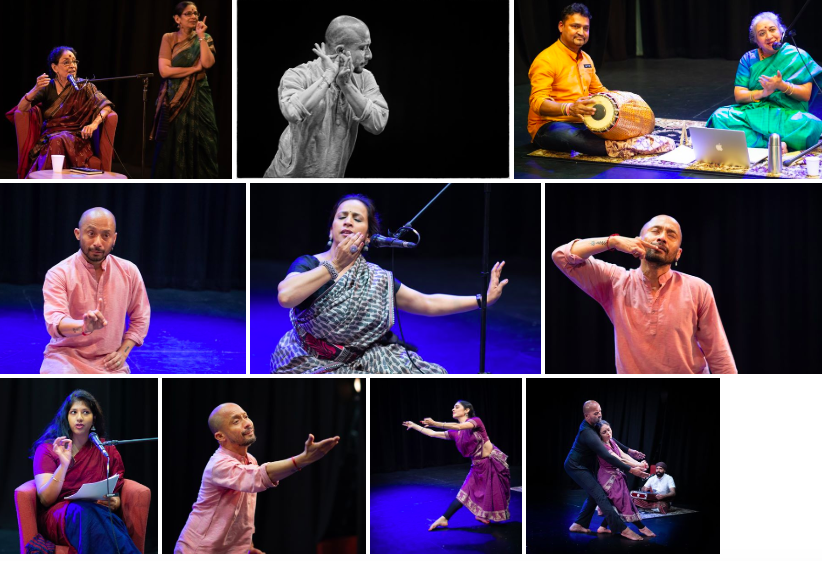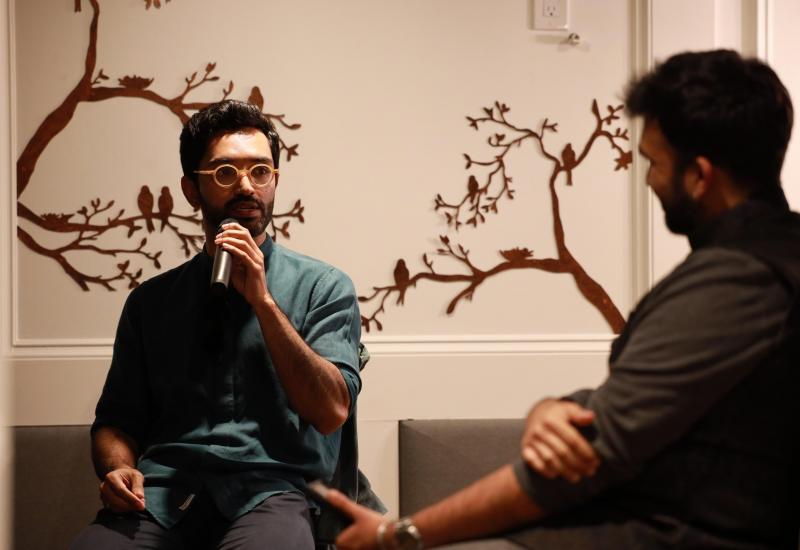From the 12th to the 21st Century: Gita Govinda Symposium
Gita Govinda Symposium
Ananda Odissi Arts Festival
University of Bedford
26 August 2019
Photos: Simon Richardson
The Gita Govinda (Song of Govinda) is a work composed in Sanskrit by the 12th-century Indian poet, Jayadeva. It describes the relationship between Krishna and the gopis ( female cowherds) of Vrindavana, and in particular one gopi named Radha.
The Gita Govinda is organised into twelve chapters. Each chapter is further sub-divided into twenty-four divisions called Prabandhas. The Prabandhas contain couplets grouped into eights, called Ashtapadis.
The Gita Govinda lends itself naturally to music, dance and painting. It has provided the odissi repertoire with themes for several choreographies including Dasa Avatar, Srita Kamala, Chandana Charachita, Kuruyadu Nandana, Dheer Sameer and Yehi Mahadhava.
These are notes from the presentations at the symposium.
Madhavi Mudgal
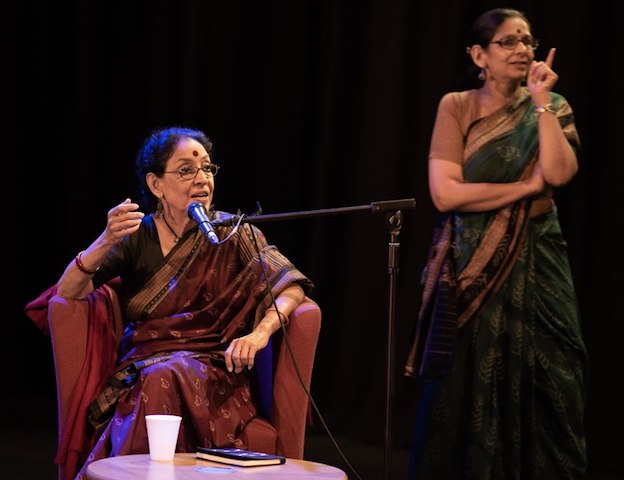
The Gita Govinda has had a continuous existence since it was composed in the twelfth century. It spread to other parts of India during the thirteenth to fifteenth centuries. Pilgrims heard the text being sung in the Puri temple and took it back with them. It can still be heard from Kerala to Manipur.
Jayadeva wrote the twenty-four prabhandhas to be sung and for dancing. It has inspired many over generations – sung, and painted on palm-leaf manuscripts, with the text illustrated.
What is the text? The first sloka tells you that it is a strange text: Krishna’s foster father, Nanda, tells Radha to take him home, because he is fearful. It then goes on to describe the forest in the Spring, which is conducive to love.
How does one create to the song? One has to have a feeling for the text. One must read the whole thing in order to feel the ashtapadi. It cannot just be a ‘word-to-word’ meaning.
The verses on leaves around the neck for example, say that they are not poisonous: they allude to Shiva drinking the poison which he held in his throat. Such references give shading and layering to the imagery.
There are only three characters in the Ashtapadis: Radha, Krishna and the Sakhi.
Only three songs are sung directly in Krishna’s voice; there are eight in Radha’s and ten in the voice of the Sakhi. The latter plays an important role: she is not just a friend or confidante, but one who makes things happen. She is also a guru, in philosophical terms.
The writing has great sensitivity; for instance the delicacy with which Krishna tells Radha that he has spread new leaves for her feet, but ‘the leaves feel inadequate, your feet are so tender’.
Pushkala Gopal
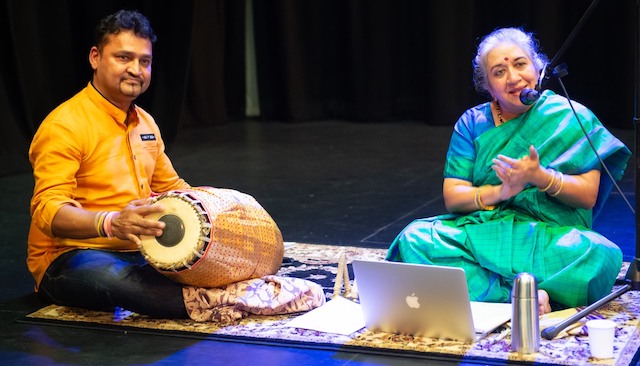
There is no reference to Radha before the Gita Govinda. She is not mentioned in the Bhagavata Purana. Yet after the Gita Govinda there are references in different texts to ‘Radha is Krishna’s atma’, and ‘She who takes away our sins is Radha’.
Krishna and Radha are almost inseparable, and there is also the key role of the Sakhi. There is a constant flow of exchanges and the Sakhi can be at different times both the guru and messenger.
In 1107 CE Jayadeva was born to a renowned scholar called Bhojadeva. According to tradition, Jayadeva went to the shrine at Puri, where he saw a beautiful dancer named Padmavati. He asked, if he wrote for her, whether she would dance for him.
The text functions on the human and the divine planes, the atma and paramatma seeking union.
The text was popularised through oral tradition and the fact there is so much alliteration makes it a pleasure to recite, ‘Lalita - lavanga - lataa – parishiilana.’
The verses lend themselves to different time-cycles, and Pushkala demonstrated ‘Pralaya Pyodhi Jaale’, the opening lines of the Dasa Avatar with the time cycles of seven and ten beats, accompanied on the mridangam by Shri Bhavani Shankar.
About 300 years ago pilgrims from South India heard singing of bhajans at Puri. This led to bhajana sampradaya communal singing in South India.
The Radha kalyanam ritual is performed at weddings, the last but one ritual. The singers – men at that point, use their top cloths and become Radha, though they are not dancers. Sanskrit runs alongside the regional languages in these rituals. There are varying aesthetics between the folk and classical traditions as is to be expected, but the sentiment is shared.
It has been suggested that Jayadeva wanted to challenge tradition and his relationship with dance sparked into flames and grew. Dance, like singing, was always considered a part of devotion to God, a journey that led to the sublime.
Mavin Khoo
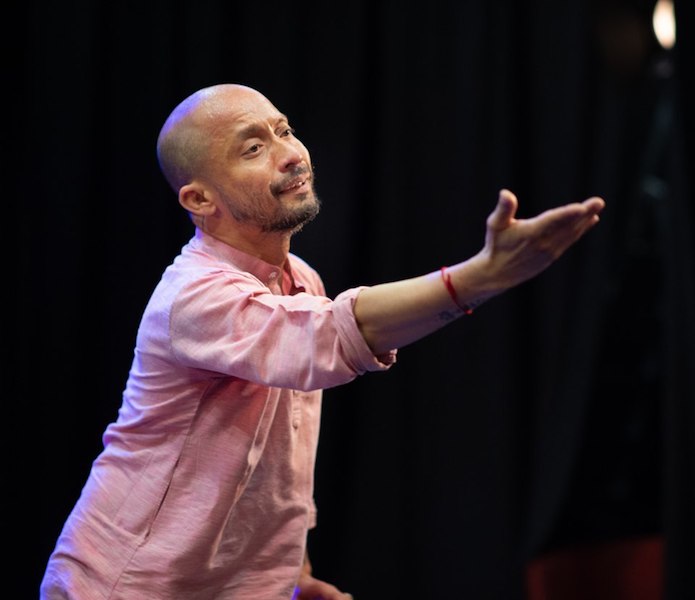
Mavin suggested that we find Radha within ourselves and that the performer comes to the place where s/he can just ‘be’, rather than ‘play’ the character. To reach that place, one has to have the ‘lived experience’ such as standing in front of the Shiva image and letting that emotion come out in performance.
Echoing Madhaviji, he spoke of the need to understand the whole context. In the opening chapter, Nanda asks Radha to accompany young Krishna, who is afraid of the dark rolling clouds. The age difference between boy Krishna and Radha, a married woman, creates an unconventional scenario, and ambiguities provide material for exploration – the treatment of time for instance: it could be a moment, or it could be eternal.
In the encounter between Radha and Krishna, the line that Radha’s garment fell is not explained. The reader is left to speculate on whether the occurrence was real or imaginary. The beauty is in the complexity.
Mavin then went on to demonstrate lines from the text in which Radha is getting dressed to meet Krishna furtively, taking care not to let her ankle bells jingle too loudly.
Urja Thakore
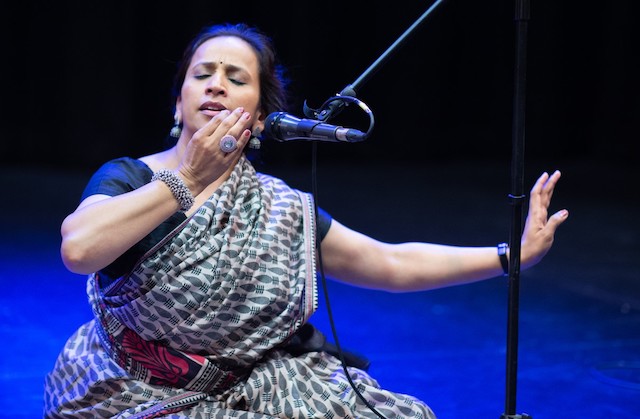
Urja spoke on Gita Govinda and kathak.
Her guru, Kumudhini Lakhia, made a distinction between North (Vaishnavite) and South (Shaivite), Krishna and Shiva. The difference is reflected in architecture, dance and even in the way saris are worn, flowing versus neat. With Krishna, it’s the heart, how you feel.
In Gujarat, the Gita Govinda text is mainly interpreted in painting.
In the kathak repertoire, the predominantly-used texts are not in Sanskrit but in Hindi or Braj. However, the bhakti rasa is parallel in kathak and Gita Govinda. The latter is such a ‘universal’ text, that we all adapt it in our everyday life.
Nisha Somasundaram
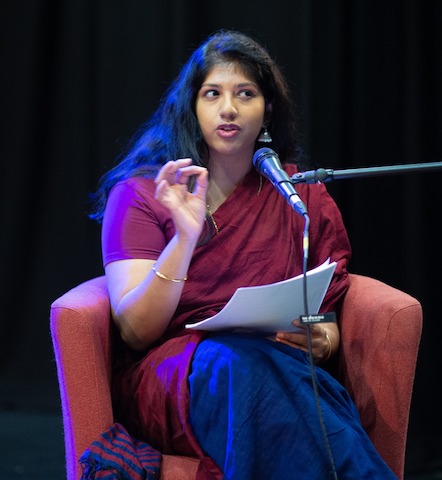
Nisha, who is herself a poet and a dance practitioner, asked why dance and poetry go so well together? In answering the question, she pointed to the close relationship in terms of metre, rhythm, tempo, rhyme or lack of it, syntax, line breaks, breath, imagery, narrative or none, in both poetry and dance.
She gave two modern examples of text-based works: Akram Khan’s Until the Lions, and Singapore-based Raka Maitra’s The Second Sunrise. The first is based on a book of the same title by Karthika Nair, which draws on the story of Amba from the Mahabharata; the second is based on the recent event of the burning of a library in Jaffna.
Karthika has noted that dance is particularly suited for such multi-layered stories as it can avoid literalness.
Nisha also introduced us to two modern poets: Reetika Vazirani and her collection Radha Says; and Meena Alexander’s poem, Krishna, 3:29 am.
Myth Embodied
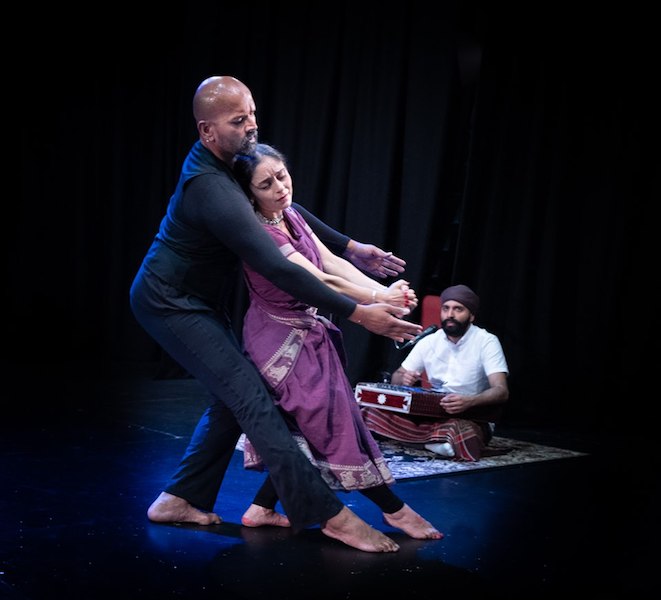
The concluding presentation was the sharing of this work-in-progress by Katie Ryan, Elena Catalano and Kali Chandrasegaram, accompanied on santoor and vocals by Kaviraj Singh.
The team is drawing on themes from Greek mythology, with parallels with the Gita Govinda; with the further challenge of working with vocals from baroque opera and raga. The exploration is full of potential and is in the hands of fine and intelligent artists. We look forward to the results.
The Gita-Govinda Symposium provided a rich experience. The speakers gave the background to an important text for odissi dancers, which was elaborated upon by music and dance demonstrations by eminent artists. Our gratitude to Ananda Arts and Director Parvati Rajamani for making the Symposium possible.

